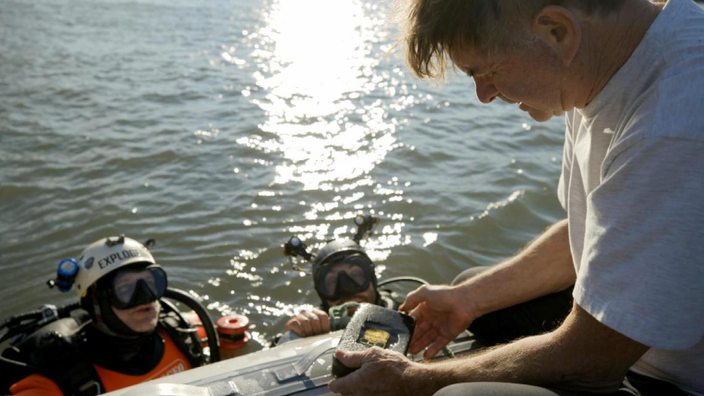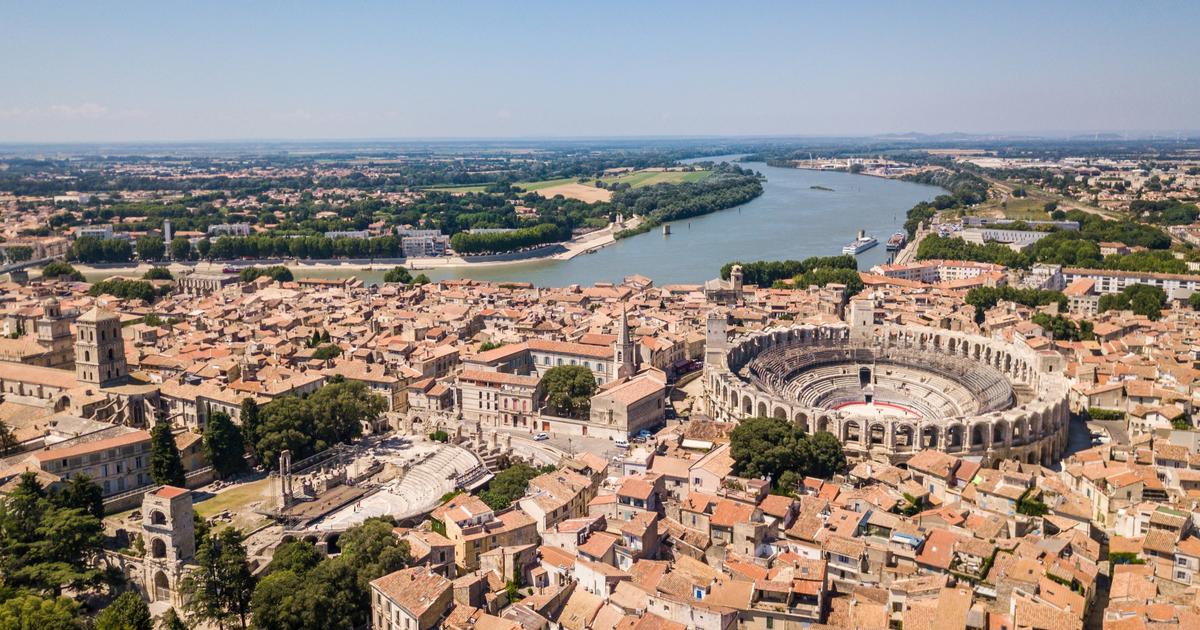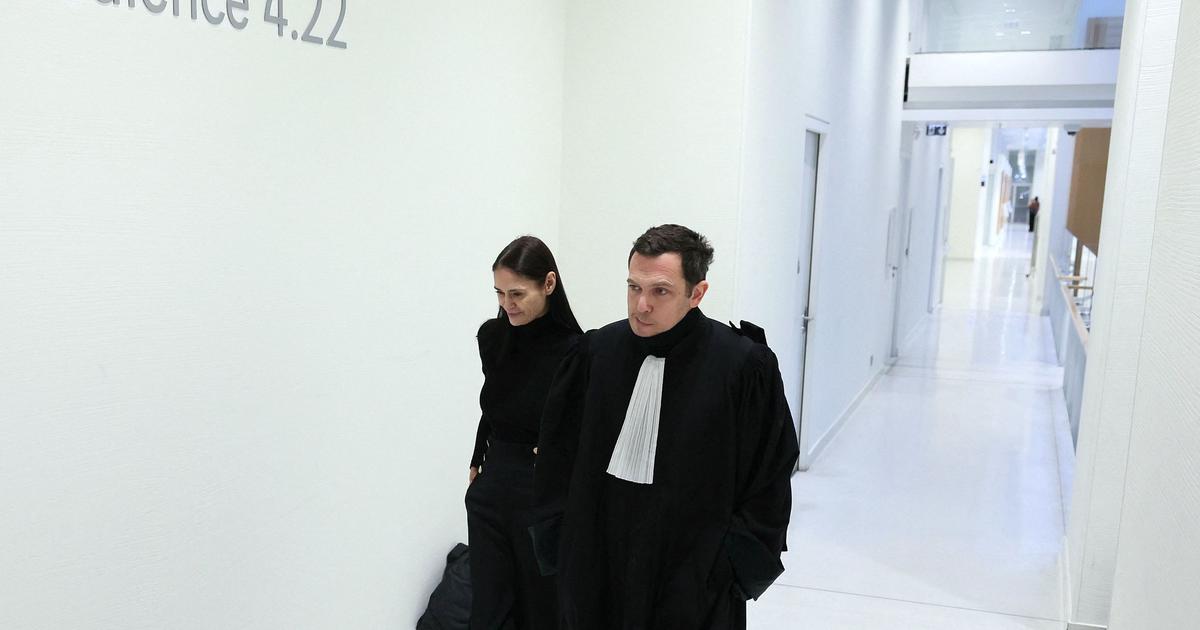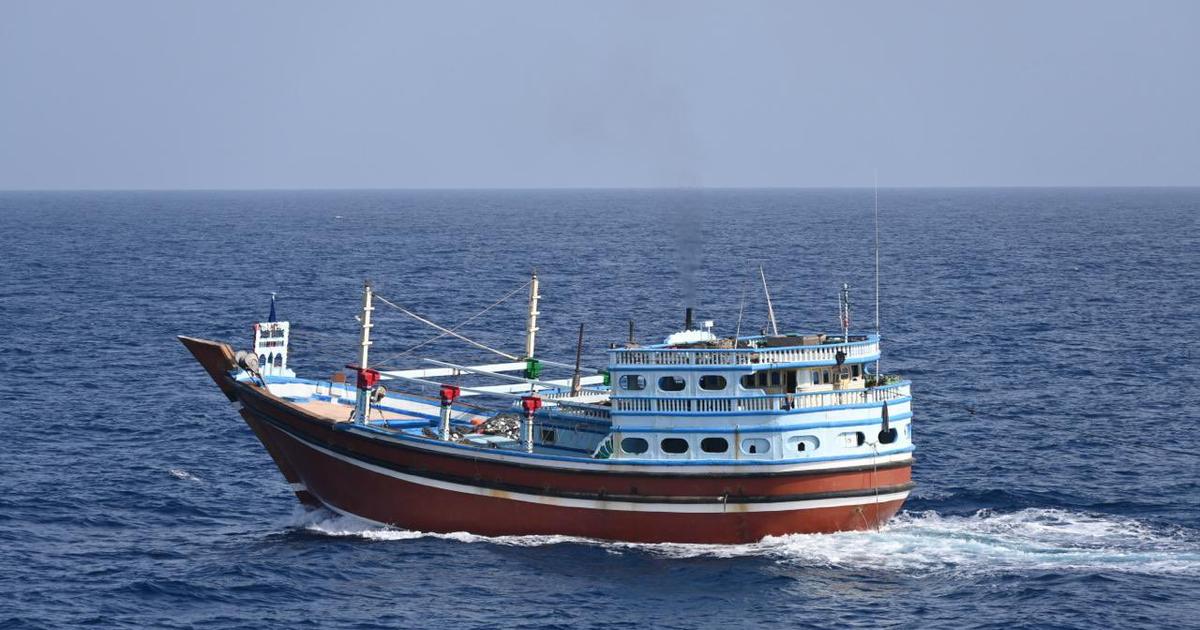It is not yet the gold of the Rhine, but the treasure of the Rhône does not fail to arouse the envy of Gallic pirates who hope to plunge into the Pactole. Discovered in October 2018 in Arles, in the depths of the Rhône, the fabulous wreck of a 4th century Roman barge is now threatened by the growing interest that seems to be manifesting around the site, after the broadcast of a documentary about it. last March. Buried under the impetuous currents of the Arles river, the ship awaits, from season to season, the return of the underwater archaeologists who discovered it three years ago already. While intrusions took place a few weeks ago in the warehouse where part of the material released from the river rests, the researchers are also impatiently awaitingthe green light to get back to the field as quickly as possible. And they hope to find their underwater vestige intact.
Read also: Luc Long tells the great story of
the Rhône Treasury
on France 5
“We had successively two burglaries between April 1 and 6
, laments Luc Long, the head of the search.
The first time they broke a window and were able to help themselves by reaching out.
The second, six days later, they went so far as to break down a door ”
. Luckily, the vessel's precious monetary treasure - thousands of Roman coins in bronze, gold and silver dated to the reign of Constantine II (337-340), as well as ingots and various precious objects - did not exist. 'not there, stored for a long time in a safe place. The looters left with part of the archaeological material collected from other sites, mostly ceramic shards and amphora fragments. For the director of the excavation, there is no doubt that these intrusions could have been inspired by the broadcast in prime time of the documentary
Le Trésor du Rhône,
on France 5, devoted to the initial discovery of the wreck. Despite the precautions taken by the film not to disclose the exact location of the site,
"It is clear that he was able to encourage locals, who recognized the building, to take action"
, argues the archaeologist, who himself participated, with his team, in the fascinating feature film.
The divers of the Drassm during the wreck excavation campaign.
2ASM
The emergency in the face of endemic nautical looting
Researcher at the CNRS, this specialist in underwater archeology to whom we owe the discovery in 2008 of the so-called head of the César d'Arles, is now worried about the possible intrusions of which could have been the object the wreck itself. Interrupted for several years now, the excavation of this barge by teams from the Department of Underwater and Underwater Archaeological Research (Drassm), has still not been able to resume. It is therefore impossible to know whether, like the warehouse, the site has been visited by unscrupulous people. As Luc Long explains, this delay in scientific excavations can be explained by the pandemic, the inevitable
“administrative delays”
, as well as by the changing moods of the Rhône which do not facilitate the excavation of the wreck.
“The river has been more hostile than in previous years
.
We went from 40 cm of visibility - which was already not terrible, to 30 or even to 10. However, at 10 cm we can no longer continue to work ”
.
Some of the coins of Constantine II found in the Roman wreck.
Eclectic / 2ASM
Read also: Storms unearthed two shipwrecks from the 16th and 18th centuries on the Suffolk coast
The hostility of the environment and unsuitable conditions for archaeological work will undoubtedly not deter the most daring curious and seasoned looters with whom Drassm researchers have already had trouble in the past.
"Looting is endemic at sea and in rivers
," sighs the site manager.
We have already been led to search pirates and catch them in the act with, in their holds, remains carefully arranged in crates ”
.
The prospect of seeing the same thing happen again in Arles is all the more frightening as the Roman coins are very far from constituting the only interest of the site: the wood of the barge is thus very well preserved, and more than 5 meters in height. what was to be a sail of the boat were exhumed, not to mention its load of tiles and lead.
All this archaeological treasure, and all this scientific context, threatens to be damaged sooner or later by explorers in search of the only gleaming objects.
1/3 - Roman gold buckles discovered in the Rhône.
They belonged to a
cingulum
, a military belt adorned with metal pieces.
2ASM
2/3 - Roman gold buckles discovered in the Rhône.
They belonged to a
cingulum
, a military belt adorned with metal pieces.
2ASM
3/3 - The Roman gold buckles discovered in the Rhône.
They belonged to a
cingulum
, a military belt adorned with metal pieces.
2ASM
Even if he remains confident, Luc Long thus prefers not to tempt the devil longer than necessary:
“Rather than crush the affair, I prefer to say“ let's activate! ”. We must precede the meticulous study of this site because the risk is great
, he warns
. Especially since, for once, this kind of major site is directly excavated by archaeologists ”
. According to the researcher, these partially cleared structures are likely to succumb to the heat of the river, a phenomenon that he has already observed on other wrecks cleared by his team.
“Some of them have since disappeared, due to the abrasive effect of the Rhône, which scoured the banks and exploded the deposits that it had kept until then for 2000 years.
“, He assures. For the time being, the underwater archaeologists of the Drassm should not return to the site before mid-summer at the earliest, as soon as their collective research project and their excavation request are authorized by the State services. .
“This required that I broaden the axis of multidisciplinarity; what I did
, details Luc Long.
It takes a little longer; I understood that a meeting was going to be held in Paris on this affair…
”.
A former Roman colony, Arles has long been the port of entry to Gaul and, by extension, thanks to the artery of the Rhône, to the Rhine, the Germanic areas and the island of Brittany. Its important river and port area thus served as an interface between the Mediterranean and a large part of the western sphere of the Roman world, which explains the twenty or so wrecks found in Arles (and the fifty or so discovered not far from there, in Fos- on sea). Unlike all the other boats, the treasure barge was however identified on the left bank of the river where it must have sunk after being caught in the uncertain current of the Rhône. She took with her her precious cargo, throwing in the Arles waves the metals no doubt intended to be remelted in the flames of the monetary workshop ofArles. By a happy coincidence, this same impetuosity of the river could well, in the end, form the best defense against the hypothetical pirates.
“Unlike our warehouse, the wreck site has formidable protection: the Rhône
, slips Luc Long, teasingly.
And believe me, he has been much more capricious in recent years ”
. Rhodanus, as the Romans designated the river, keeps its secrets with great skill.









